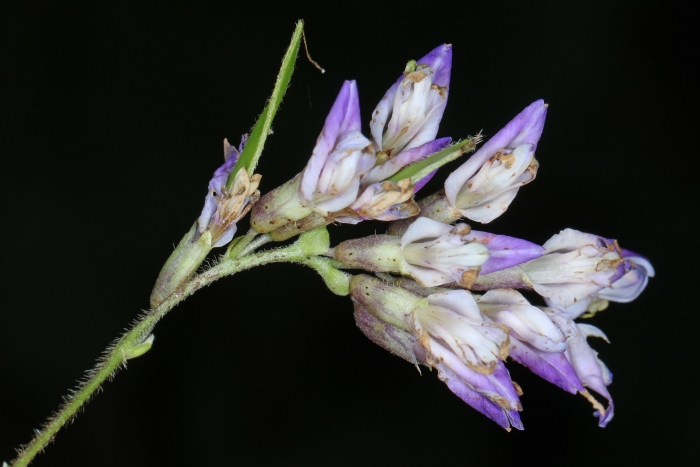American Hogpeanut
(Amphicarpaea bracteata)
American Hogpeanut (Amphicarpaea bracteata)
/
/

Judy Gallagher
CC BY 2.0






















































Estimated Native Range
Summary
American Hogpeanut is valued for its ability to enrich soil with nitrogen, making it a beneficial companion plant in gardens. It is also used for ornamental purposes, particularly in naturalized areas or wildflower gardens. It thrives in a range of light conditions, from full sun to part shade, and is adaptable to various soil types with different drainage rates. While it is not a high-maintenance plant, it does require consistent moisture. There are no significant disease or pest issues, but gardeners should be aware that it can spread vigorously in favorable conditions.CC BY-SA 4.0
Plant Description
- Plant Type: Vine, Herb
- Height: 1-5 feet
- Width: 1-5 feet
- Growth Rate: Moderate
- Flower Color: Purple, White
- Flowering Season: Summer
- Leaf Retention: Deciduous
Growth Requirements
- Sun: Full Sun, Part Shade
- Water: Medium
- Drainage: Slow, Medium, Fast
Common Uses
Bird Garden, Butterfly Garden, Edible*Disclaimer: Easyscape's listed plant edibility is for informational use. Always verify the safety and proper identification of any plant before consumption., Low Maintenance
Natural Habitat
Native to deciduous woodlands, forest edges, and thickets across the Eastern United States and Ontario
Other Names
Common Names: Hog Peanut, Ground Bean, Hog-Peanut, American Hog Peanut, Wild Peanut, Haricot De Terre, Amphicarpe Bractéolée
Scientific Names: , Amphicarpaea bracteata, Amphicarpa bracteata, Amphicarpaea bracteata var. comosa, Amphicarpaea bracteata var. bracteata, Amphicarpaea comosa, Amphicarpaea monoica, Amphicarpaea pitcheri, Glycine monoica, Amphicarpa bracteata var. comosa
GBIF Accepted Name: Amphicarpaea bracteata (L.) Fernald